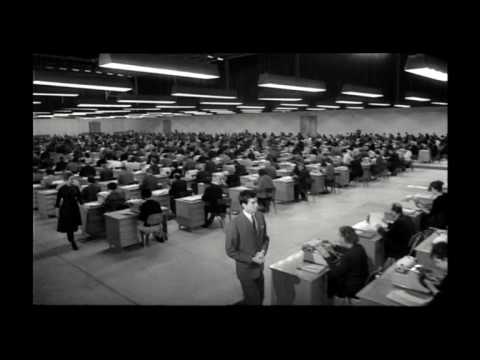This is the 16th of these monthly columns about £1 classical music records. I’ve learned so much researching them, but let me tell you: there haven’t half been times when I’ve found myself staring into the middle distance wondering whether classical music isn’t much more than a giant stitch-up.
Just today, I read that in the early-1950s, when pop began to challenge the supremacy of classical in the record business, an exec at EMI decreed that no classical album could be made without the approval of an organisation called the International Classical Recording Committee, made up of the heads of the biggest markets. A majority needed to agree that an album would show a profit in their region within three years or it wouldn’t get made. Good business sense, you might imagine, but it was a disaster – record buyers quickly tired of seeing the same old pieces for sale, and there were further ramifications for the wider world of classical music.
EMI was the biggest label in Europe at the time, exerting power not just over what was released on LP, but also what was heard on the radio and in concert halls. I’m not suggesting they single-handedly turned classical music into a museum industry, but they can’t have helped. Who would have lost out? Contemporary talent pushing music forwards, as well as lesser-celebrated composers from the past (especially women) who we now know had much to say. And you wonder why the general perception of classical music is that it’s something that white men did long, long ago.
Perhaps that’s unfair. There’s always been a vibrant scene of classical indie labels that are much braver in what they choose to release and you don’t have to dig deep to find young composers today, like Anna Meredith, Hannah Kendall and Mark Simpson, doing bold, interesting work. But they still have to rely on ancient institutions, like the Proms, which is admirably dedicated to showcasing new music on bills with the potboilers of yore, to reach an audience of size. And anybody working in classical in 2018, except on the fringes, inevitably falls victim to its PR problem. It still gets called ‘art music’ or ‘serious music’ – both bollocks terms – and it seems to be perpetually presented in soft focus, as countless albums called things like Classical Chillout get released and new, mainstream stars get marketed with imagery that my friend described as, “Whoops, I dropped the trifle. Sorry, mum!”
I can say with certainty that becoming a classical music boffin over the last five years has enriched me emotionally and intellectually, and that many pieces written decades or centuries ago speak to me about my life today in ways that I find constantly surprising and exhilarating. But you truly have to put up with a lot of bullshit on the road to musical nirvana, and I think that’s why I love it when classical music gets its bubble pricked, as has happened many times. Already in these columns I’ve mentioned how Austrian-born violinist Fritz Kreisler toured Europe in the 1910s and 1920s playing supposedly unheard works by past masters (they were his own compositions, as he admitted in 1935), and also recounted the bonkers tale of how an English pianist called Joyce Hatto and her husband Barry spectacularly scammed the classical music industry in the 21st century by palming off 100-odd CDs of other pianists’ recordings as hers. Just as remarkable is the story of how one of the most-loved pieces of classical music ever written, especially by film fans, is a hoax too, although perhaps spoof is the better word.
The above YouTube is a live recording of British musician Neville Marriner (1924–2016) and the superb chamber music group he led until 2011, Academy of St. Martin-in-the-Fields, playing Adagio in G Minor, a solemn tearjerker of a piece credited to the Italian baroque composer Tomaso Albinoni (1671–1751). It’s the first track on the album pictured at the top of this article, The Academy In Concert, and for my money it’s the best version of a piece that has been recorded scores of times, often with plentiful added cheese, and become an absolute staple of cinema and TV in the process. It was the theme tune to Orson Welles’s 1962 film of the Franz Kafka novel The Trial and, according to IMDb, it’s since be used in as many as 50 films, TV shows and documentaries, including Rollerball, Fame, Gallipoli, Flashdance and Manchester By The Sea. In fact, it’s become a cliché. “Should Albinoni’s Adagio In G Minor not be banned onscreen?” asked New Yorker critic Anthony Lane in 2016, arguing – perfectly reasonably – that it’s been “squeezed dry” by Hollywood. (It’s also a favourite among rock bands – Procol Harum, The Doors and many metal groups have covered it.)
The Academy In Concert was released in 1974, by which time the classical world had already assumed something was up with Adagio. “There has been considerable disputation about Albinoni’s Adagio In G Minor in recent years,” begin the sleevenotes on the album. “It is said to derive from a fragment found in Dresden after the bombing of the great library there during the Second World War. It was published in an arrangement for organ and strings by Remo Giazotto, an Italian musicologist whose extended monograph on Albinoni and thematic catalogue of his works first appeared in 1945 but contained no mention of this.”
The fragment – the bassline and six bars of melody – has never been seen, leading most music historians to conclude that Adagio is entirely Giazotto’s work. It was certainly Giazotto who copyrighted and published the piece in 1958, and later in life (he died in 1998) he revised his story claiming full authorship, possibly as a ruse to keep his presumably considerable royalty payments flooding in. In a 2007 book, Giazotto’s last assistant before his death, Muska Mangano, is quoted as saying that a modern but independent transcription of the fragment was found in Giazotto’s papers after his death, but none of this matters very much. As it also says on the sleevenotes of The Academy In Concert: “If in this form there seems to be as much Giazotto as Albinoni, if not more, this will not worry those who enjoy the rich sentiment of the setting.”
Giazotto is a mysterious figure. There is a picture of him online, but the image most often credited as being him is actually of the conductor Herbert von Karajan, who recorded easily the most kitsch version of Adagio. And I can’t for the life of me find a single interview with Giazotto – in English, Italian or any other language (please get in touch if you know of one). It’s not clear whether he wrote Adagio for a laugh, to try and make a few lira, or because he was trying to prove a point. But it’s likely that if he’d published the piece in 1958 as a work written in the Italian baroque style by himself alone, without Albinoni’s name attached, it would have died without a trace.
Issues of authenticity bog down classical music as much as they do pop, rock and hip hop, and make just as little sense. In the 1990s, a German recorder player and composer called Winfried Michel fobbed off six piano sonatas he’d written as being by Haydn and fooled H. C. Robbins Landon, king of Haydn scholars, who called them “the greatest musicological coup of the century”. They quickly disappeared from view, but not before they were given to pianist Paul Badura-Skoda to play in California, just as the con had been exposed. “Take away the certainty of authorship, and it’s devilishly difficult to read the musical images within,” reported The New York Times. “Under the impression that these piano sonatas were composed by Haydn, Mr. Badura-Skoda fell in love with them. Perhaps his glum demeanour in Santa Barbara, and his refusal to play the last movement of one of the sonatas after playing the first two reflect the sadness of a jilted lover who is told, when the affair ends, ‘I never loved you; I was faking the whole time.’”
Questions endure. Did Badura-Skoda, and many others, really only fall in love with the sonatas because of the story they arrived with and, if so, why is it impossible to love clearly accomplished music written by a nobody German recorder player called Winfried? Also, as it says in the New York Times article: “If someone can write pieces that can be mistaken for Haydn, what is so special about Haydn?”
Now have a listen to the beginning of Stravinsky’s 1920 ballet Pulcinella, then listen to the start of Trio Sonata No. 1 from 1780 by also-ran Italian composer Domenico Gallo. Stravinsky completely rips off Gallo, as he does other composers throughout the ballet, but has Pulcinella been dismissed from the repertoire for being little more than blatant plagiarism by a Russian hack who, in 1920, might well have run out of original ideas? Not at all. Stravinsky said, “It was a backward glance, of course, but it was a look in the mirror too,” and everyone proclaimed him to be a proto-postmodern genius. (I agree, for what it’s worth.)
What Giazotto did was rare – he wrote a piece of classical music in the 1950s that had genuine mass appeal, and Adagio is especially unusual insofar as it didn’t just survive being exposed as a spoof, it positively thrived. That might be because nobody ever seriously imagined it had much to do with Albinoni – it sounds nothing like his actual music – or, more likely, because the classical music business is clever enough, or cynical enough, to never look a gift horse in the mouth. As soon as the record labels realised they had a red-hot seller on their hands, they went hell for leather with it. Adagio is jammed onto countless compilations albums of heart-wrenching baroque music – the precursors to today’s Classical Chillout – nearly always alongside Pachelbel’s Canon and the accidentally amusingly-titled Air On The G String by Bach, a jazzy version of which anyone who watched TV in the 80s will remember from the Hamlet cigar ads.
And what of Albinoni himself? On the one hand, he’s known in the 21st century for a piece he didn’t write; on the other, the success of Adagio has shone more light on his actual compositions than might have happened otherwise. He remains a fringe figure in the history of music, but he was admired by Bach, who based two fugues on themes by Albinoni, and he’s considered to be a pioneer of concerto form, along with his younger rival in Venice, Vivaldi, who it’s assumed he must have met. Perhaps his role in music was always to be cast as the unlucky man. It’s thought he wrote between 50 and 80 operas, but only three survive, and in 1722 he pitched up in Munich for the premiere of one of those operas, I Veri Amici, only to find that someone else in the city had been making good money playing concerts as him. Poor bastard. Even in the 18th century, charlatans were cashing in on his name.





